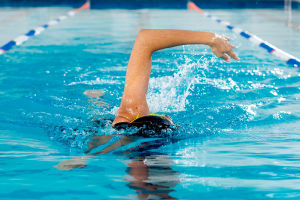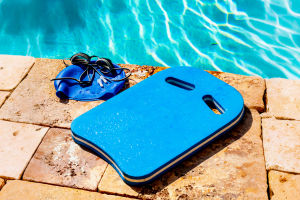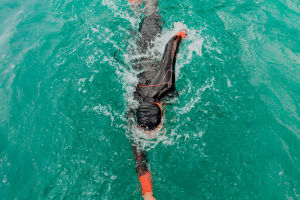The warm-up phase in swimming is often perceived as a mere back-and-forth routine in the pool. Learn how to make the most out of this crucial moment.
Lykkers, typically, warm-ups in swimming are seen and carried out as simple linear movements across the pool, lacking depth and purpose.
It is common to swim several meters without focusing on specific techniques, without intensity or style changes, and without strategic guidance. Consequently, time passes without any valuable investment, leaving swimmers breathless and struggling during the main training session.
The warm-up in swimming should be viewed as a muscular preparation, where muscles are gradually brought to a temperature that prevents injuries when higher intensity is required. Heart rate increases and the respiratory rate goes up, preparing the body to enhance both technical efficiency and performance. Besides the physical aspect, mental readiness is equally essential. Just as warming up the body withouthaving a prepared mind won't lead to significant progress.
‘Dry’ Warm-Up
A good practice could be to establish a brief dryland warm-up routine with targeted movements for optimal psychophysical activation. Concentrating on shoulder articulation is crucial in swimming, as the shoulder joint is highly mobile and requires special attention. Specifically:
- Rotator cuff strengthening and preventive exercises using resistance bands or light dumbbells can be performed.
- Shoulder mobility exercises.
- Mini plank series for core activation and strengthening.
- Few seconds of jumping jacks or burpees to raise heart rate.
- Hip mobility exercises for general stability and balance improvement.
This dryland warm-up should last around 20-30 minutes and have a clear purpose, avoiding ineffective and potentially harmful oscillatory movements.
Aquatic Warm-Up
Following the dryland routine, transition into the water. Instead of swimming a continuous 500 meters freestyle at the same pace during warm-up, consider diversifying the routine:
- Swim 500 meters with fins, alternating 75 meters freestyle and 25 meters backstroke.
- Swim 500 meters freestyle with a snorkel; focus on breathing pattern for 200 meters, and alternate 25-meter leg only drills with 25-meter swims for 300 meters.
- Swim 500 meters without equipment, including 200 meters emphasizing turn speed and 300 meters freestyle with easy 50-meter laps while breathing on the same side and 25-meter hypoxic laps.
Cardiac Activation
Before starting the main swimming set, performing activation drills that can be general or specific to the planned workout is beneficial.
A generic pre-set can focus on short speed development (e.g., 8x25 meters with 10-15 meters maximum effort), breathing capacity improvement (12x50 meters with varying breathing patterns every 50 meters), internal progressions (8x25 meters progressing internally at each 25), external progressions (12x50 meters externally progressing from 1st to 3rd), technical exercises, fundamentals (start, turn, finish, underwater work), etc.
The choice of equipment depends on the workout objective and creativity.
In conclusion, the warm-up stage is where unwittingly acquired errors, disjointed movements, and minor details that, if overlooked, can lead to counterproductive motor habits are fostered. Investing time and attention into this training phase is a winning strategy.


